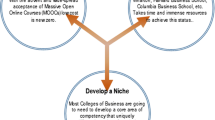Abstract
While the potential utility of computer technology to medicine is often acknowledged, little is known as to the best methods to actually teach physicians about computers. The current variability in physician computer fluency implies there is no accepted minimum required level of computer skills for physicians. Special techniques are needed to instill these skills in the physician and measure their effects within the medical profession. This hypothesis is suggested following the development of a specialized course for the new physician. In a population of physicians where medical computing usage was considered nonexistent, intense interest developed the following exposure to a role model having strong credentials in both medicine and computer science. This produced an atmosphere where there was a perceived benefit in being knowledgeable about the medical computer usage. The subsequent increase in computer systems use was the result of the availability of resources and development of computer skills that could be exchanged among the students and faculty. This growth in computer use is described using the parameters of an infectious process model. While other approaches may also be useful, the infectious process model permits the growth of medical computer usage to be quantitatively described, evaluates specific determinants of use patterns, and allows the future growth of computer utilization in medicine to be predicted.
Similar content being viewed by others
References
Levinson, D., Information, computers, and clinical practice.J. Am. Med. Assoc. 249:607–609 1983.
The Seeds of Artificial Intelligence, U.S. Dept. of Health, Education and Welfare Publication (NIH) 80-2071, Government Printing Office, Washington, D.C., 1980.
King, W. R., Computer literacy: No modifier needed.Chron. High. Educ. 19, July 21, 1982.
McCracken, M. M., Why is it so difficult to teach physicians about computers?Proceedings MEDCOMP82 (IEEE Computer Society), Philadelphia, September 1982.
Hokanson, J. A., et al., An information system for head and neck tumors: Optimal use of abstracting and retrieval resources.J. Med. Syst. 8:217–228, 1984.
Shelly, G. B., and Cashman, T. J.,Introduction to Computers and Data Processing, Anaheim Publishing, Anaheim, 1980.
Hokanson, J. A., et al., Design consideration for a medical school hospital cancer patient data system.Cancer 51:1556–1561, 11983.
Quinn, F. B., User education: Two modes, two populations.Proceedings MEDCOMP82 (IEEE Computer Society), Philadelphia, September 1982.
Quinn, F. B., Computer literacy: Operational definitions.Proceedings MEDCOMP82 (IEEE Computer Society), Philadelphia, September 1982.
Quinn, F. B., What to do about computers.Arch. Otolaryngol. 109:244–245, 1983.
Goffman, W., Mathematical approach to the spread of scientific ideas: The history of mast cell research.Nature 212:449–452, 1966.
Author information
Authors and Affiliations
Additional information
From the Department of Otolaryngology, UTMB, Preventive Medicine and Community Health, UTMB, and the Cancer Center, UTMB.
Rights and permissions
About this article
Cite this article
Quinn, F.B., Hokanson, J.A., McCracken, M.M. et al. Dissemination of computer skills among physicians: The infectious process model. J Med Syst 8, 307–317 (1984). https://doi.org/10.1007/BF02222178
Issue Date:
DOI: https://doi.org/10.1007/BF02222178




